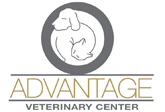Better Safe Than Sorry: A Jumpstart on Holiday Pet Safety
There are two general types of people: those who wait all year for the holidays and those who simply can’t be bothered by all the hype. Wherever you fall, be sure your pet is safe from potential risk. Indeed, it’s hard to imagine anything bad happening as a result of festive decor, delicious food, or fun parties, but your pet’s safety could be in the crosshairs. With our holiday pet safety measures, you can still enjoy the season – and so can your four-legged best friend.
The Most Common Culprits
Sadly, we see a spike in pet emergencies in the weeks leading up to the jolliest times of year. Most are due to inflammation, gastrointestinal blockages (decorations, tinsel, tape, ribbon, etc.), and pancreatitis. The most common dangers include:
- Food – Foods like rich, fatty meats, gravies, baked goods sweetened with Xylitol, raisins, chocolate goodies, stuffing with onions and garlic, and much more can land your pet in the ER this season. Any leftovers? Be careful not to wrap them in aluminum foil in case your dog gets a hold of them.
- Candy – the holidays are a great time for candies! From Halloween all the way through New Years Day, there seems to be an abundance of candies and sweet treats more readily available to your pet. Turn your back or leave that chocolate bar out and you could have an emergency on your hands. Keep an eye on candies, treats and put everything out of reach – this includes the trash for our garbage-digging pets!
- Drinks – People love to toss back a few at a holiday party, but pets should never be allowed to lap up a taste. In fact, alcohol poisoning can be extremely dangerous for pets, so please keep out of reach.
- Plants – Holiday evergreen trees, pine garlands, and poinsettias are perfectly appropriate for the season, but many pets get into trouble around them. Watch out for a toppling tree, pine needles stuck in the paws or muzzle, or worse, getting eaten up. Poinsettias, mistletoe, and holly berries are known to be toxic if eaten. Also, tree water can be full of dangerous chemicals for your pet; do not encourage your pet to hang out beneath the tree.
- Lights – We depend on extension cords or power surges to keep our holiday lights glowing bright, but if left on the ground or dangling, your pet could chew on them or become entangled. Batteries should always be safely stored. Likewise, any lit candles should be out of the way of a wagging tail or twitching whiskers.
- Decorations – In addition to tinsel, holiday decorations with small pieces, tiny decorations and colorful decor can be all too tempting for your pets. From Halloween skulls, skeletons and similar decor to Thanksgiving napkin rings to Christmas/Hanukkah/New Years accoutrement, it’s important to make sure everything it safely out of reach or your pets are contained while decorating. It’s far too easy for these items to become chewing options or tiny snacks that can quickly become intestinal blockages which could ultimately kill your pet.
Holiday Pet Safety at Home
Guests are a constant during the holidays. Whether you expect temporary visitors ringing the doorbell or those who intend to stay a few days, keep in mind your pet can have strong reactions. Please make sure your pet’s microchip is up to date, his or her tags are clearly legible on a secure collar, and that there’s a safe, quiet place to rest when the rest of your house is full of lively guests.
Pet costumes can be adorable and so much fun – but make sure your pet is comfortable with these new outfits. If your pet is stressed while your trying to fit that snug holiday attire over their head or become catatonic once the costume is on, it might just be best to let them wear their birthday suit for the holidays. Adding outfits, headbands, body decorations can cause undue stress for your pet in a time that is already full of new foods, new people and new weather. In the worst circumstances, your pet may try to bite or chew off these costume pieces, leading to small beads, long ribbons or pieces of cloth and accessories becoming lodged in their throat or gastrointestinal tract.
Pet anxiety is a real threat to overall health and wellness; consideration of your pet’s emotional state should be at the forefront of your approach to holiday pet safety. Please keep a watchful eye on your pet as the holidays approach. If you need any help with your pet’s behavior, we encourage you to reach out to us.
From our veterinarians and team members, we wish you and yours a happy, safe holiday season!
